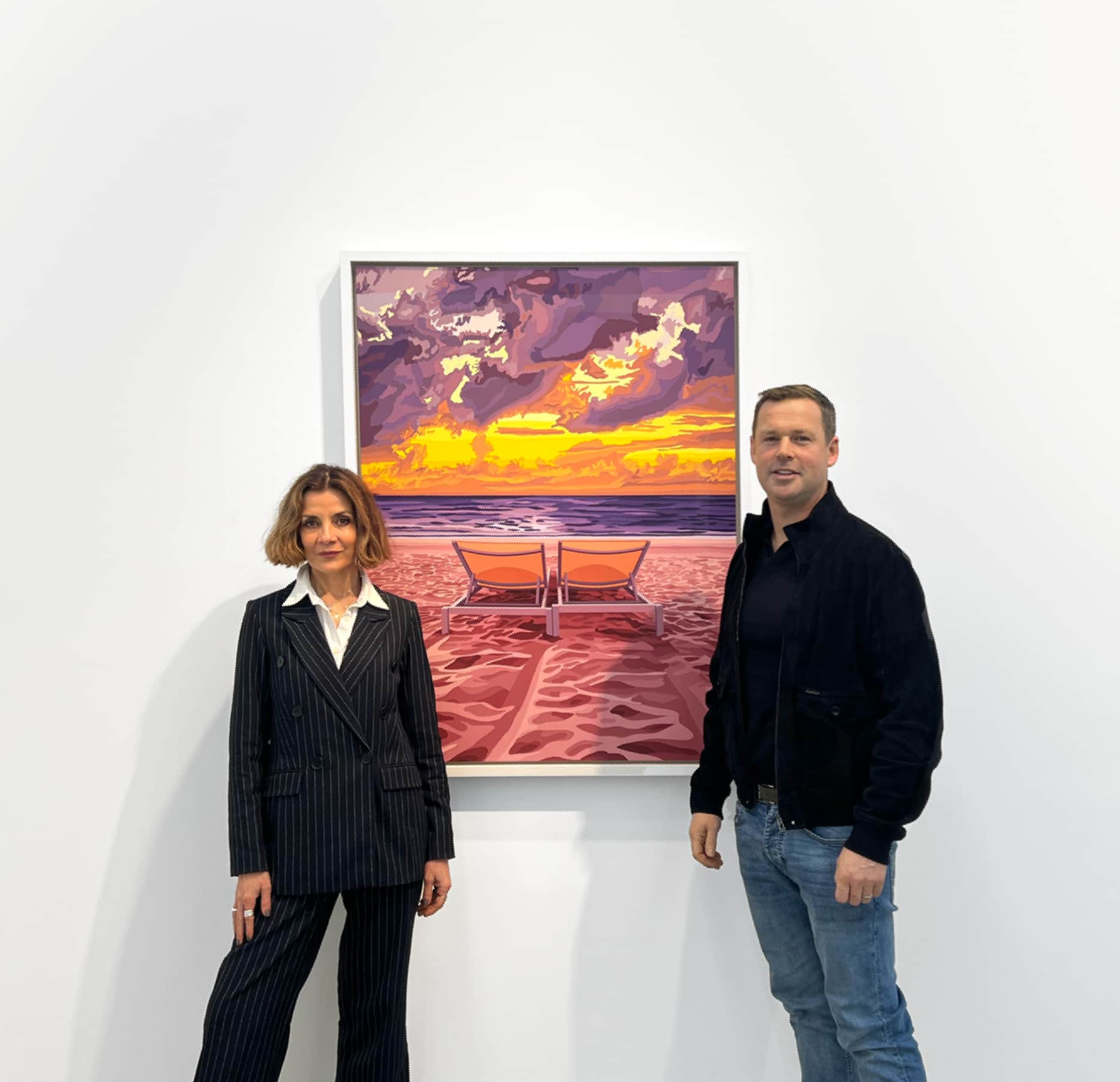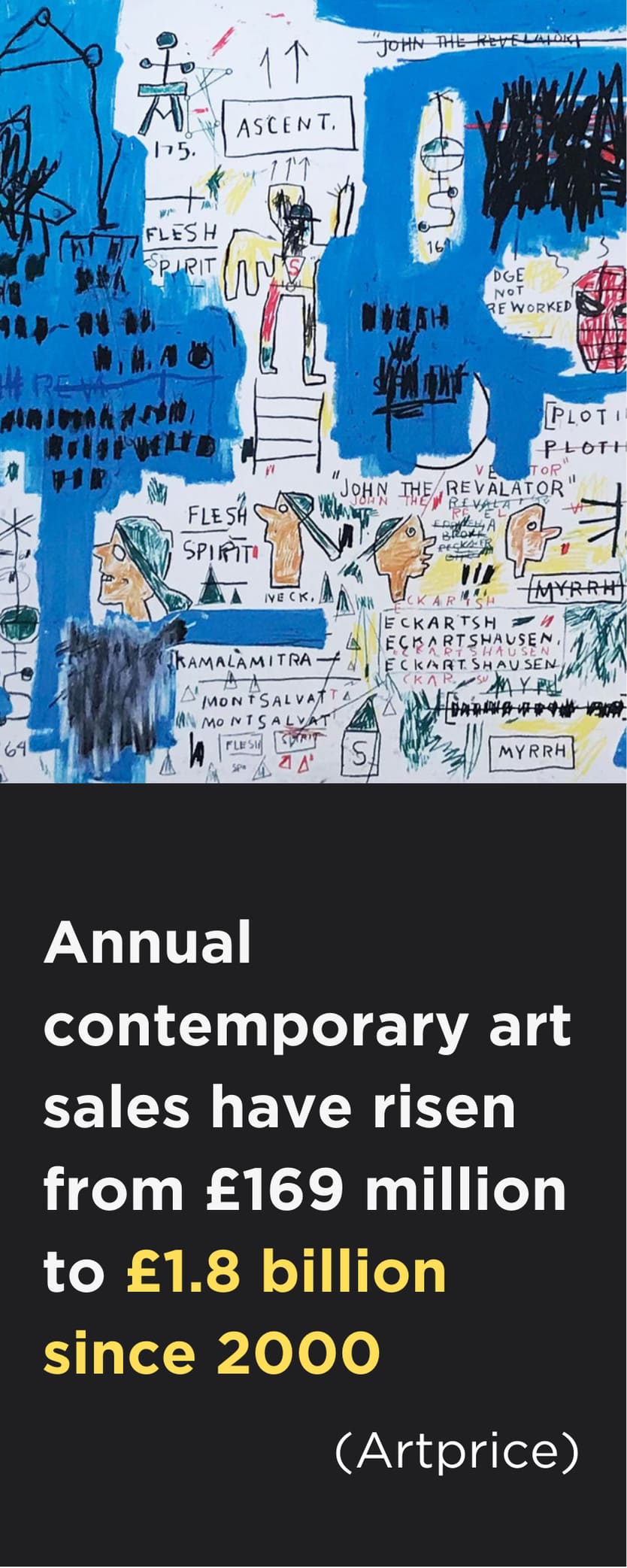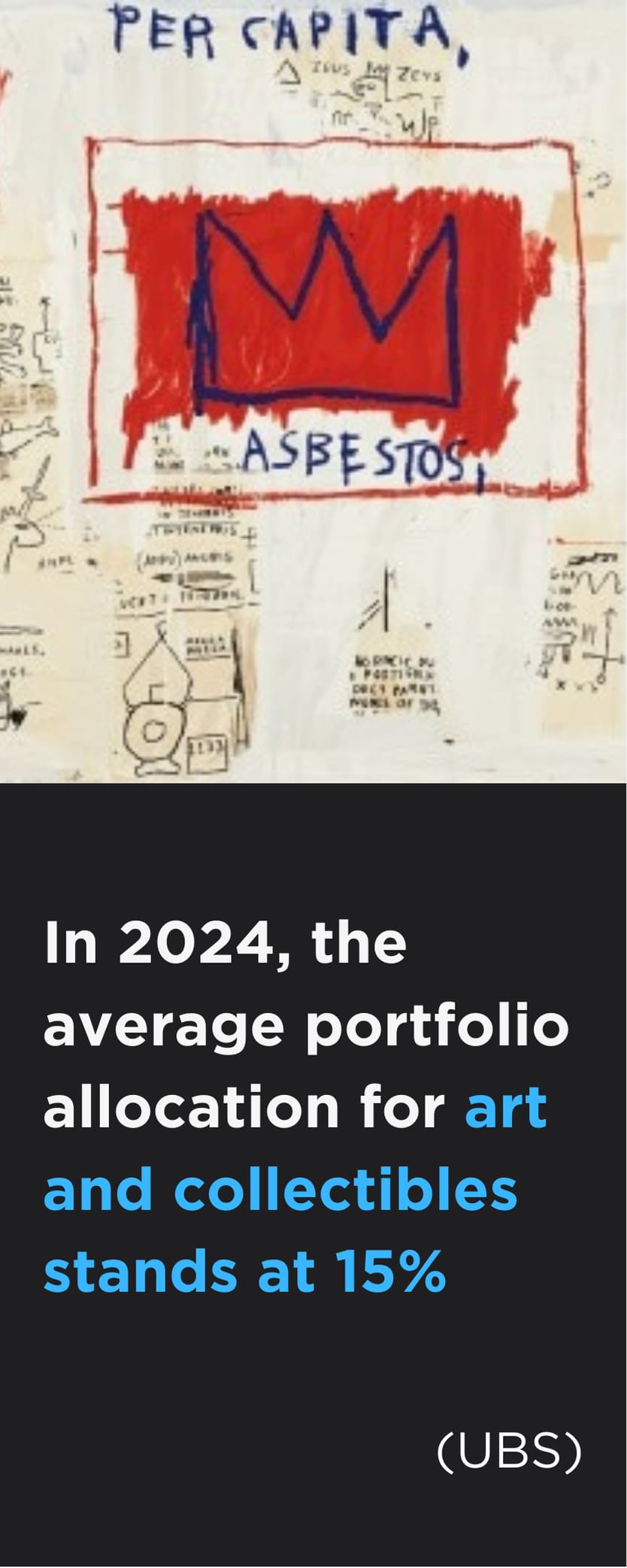In anticipation of Will Martyr's third solo show at Maddox Berkeley Street, In Every Moment, Global Gallery Director Fi Lovett sits down with the artist to discuss the meticulous craft and emotional depth behind his vibrant, detail-rich paintings.
Known for his highly saturated compositions that evoke sunlit escapes and peaceful retreats, Will Martyr’s work invites viewers into scenes of memory and serenity—yet each piece demands a surprising amount of labour and precision to achieve its flawless surfaces. In this candid conversation, Martyr shares insights into his creative process, the unique challenges of working on both large-scale canvases and intricate tondos, and his relentless pursuit of beauty in art. Read on to explore the inspirations, techniques, and personal reflections that define Martyr’s distinctive vision.
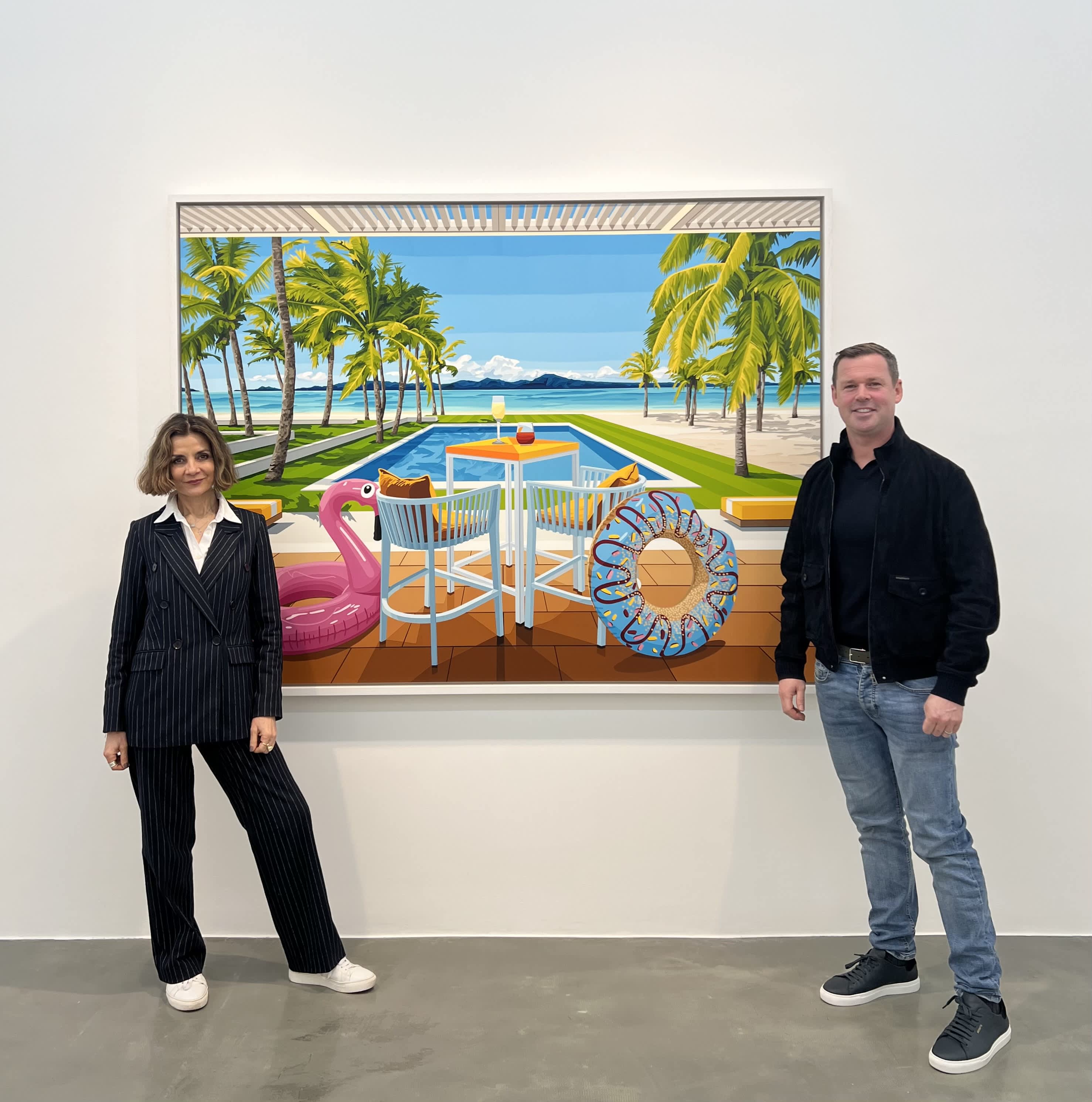
Fi Lovett: Will, we were just admiring the tondos in the gallery. You mentioned something fascinating: creating a small tondo, even at just 40 centimetres, takes as much time as one of your larger 120 by 120 cm paintings. How is that possible?
Will Martyr: Yes, it does! That’s because I aim for the smaller works to be as visually intricate as the larger ones. To achieve this, I ramp up the complexity, so each tondo requires incredible detail and preparation. It doesn't matter if I'm working on a massive painting or a small tondo—the process of creating the composition, sourcing images, and all the preparatory work remains the same. The material costs may be less for a smaller painting, but the time and effort invested are equivalent.
Fi Lovett: So it’s exactly the same process?
Will Martyr: Exactly. The only difference is scale. And in fact, the smaller pieces often reveal the process even more intimately. Because viewers are so close to them, the surface textures, the overlapping paints, and the physicality of each brushstroke become much more apparent.
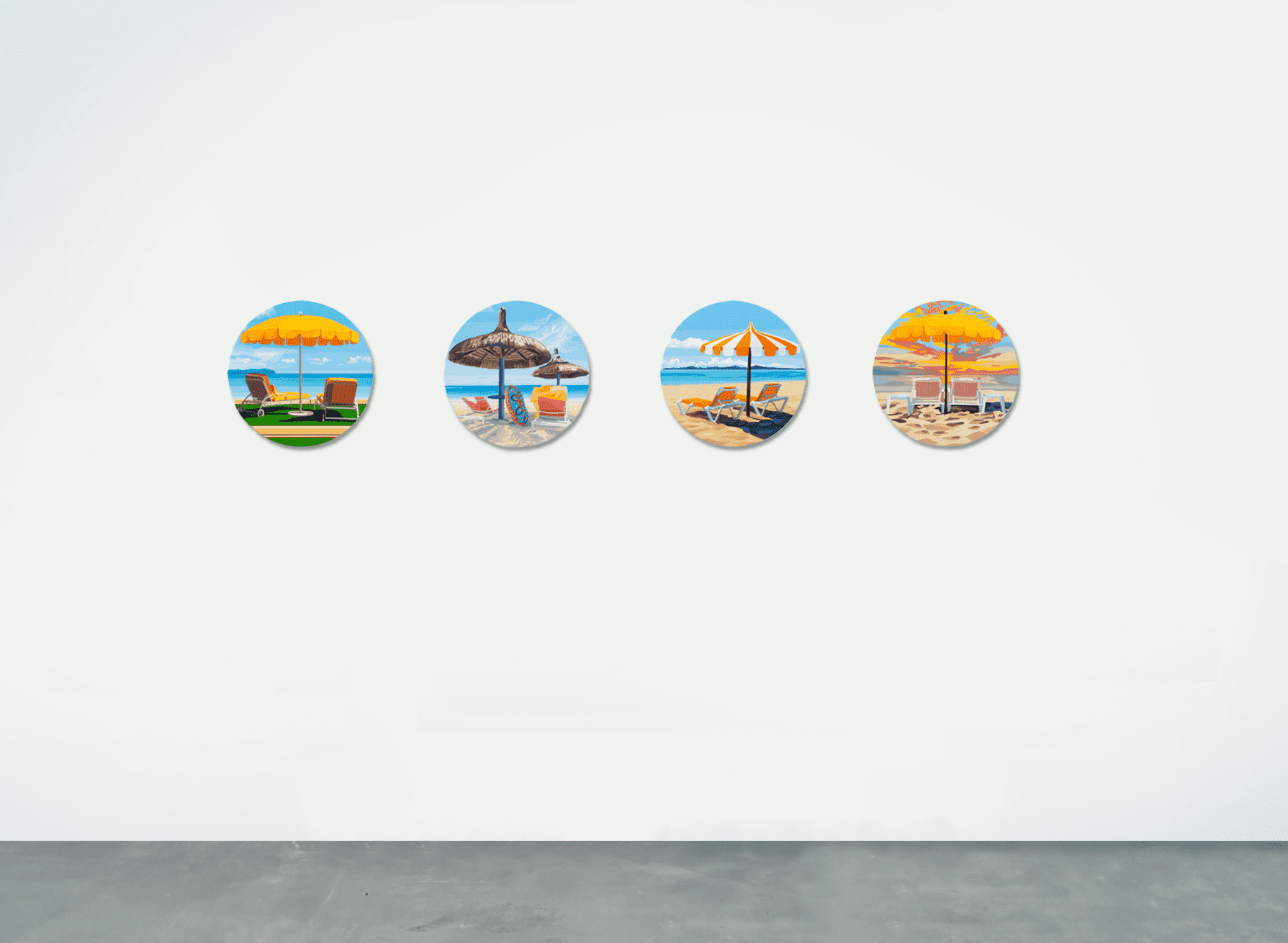
Fi Lovett: It’s almost like high definition, isn’t it? Your work reminds me of that shift from old televisions to HD—everything is more vibrant, sharper, and larger than life.
Will Martyr: Yes, that’s a good analogy. With the smaller works, you can see the little imperfections, those subtle human touches. I like to think of them as my own gestures, similar to how an artist like Jackson Pollock might leave a hint of a fingerprint or a stray ash on his work. In my case, it might be a tiny bubble in the paint or a small irregularity, which I find adds authenticity.
Fi Lovett: Like a deliberate flaw in a Persian rug, so it’s not "perfect.” Do you feel that way about your work?
Will Martyr: Definitely. I know every piece I’ve made, and I could probably spot a forgery because I remember every little quirk in each one. And I do appreciate those imperfections; they make each painting unique. My tondos, for example, are painted directly onto wood rather than canvas, which adds another layer to the process—masking, priming, sanding, painting—all meticulously done over days.
Fi Lovett: Is that part of what draws you to these smaller works? A different challenge within your practice?
Will Martyr: Yes, absolutely. For the past decade, I’ve been known for creating large-scale paintings—up to three metres by two metres. Creating smaller pieces is challenging for the reasons we discussed: they’re harder and more time-intensive to make. Yet, seeing them together as a series of ten on the lower ground floor of the gallery, they become jewel-like, with an intensity that resonates in such a small area.
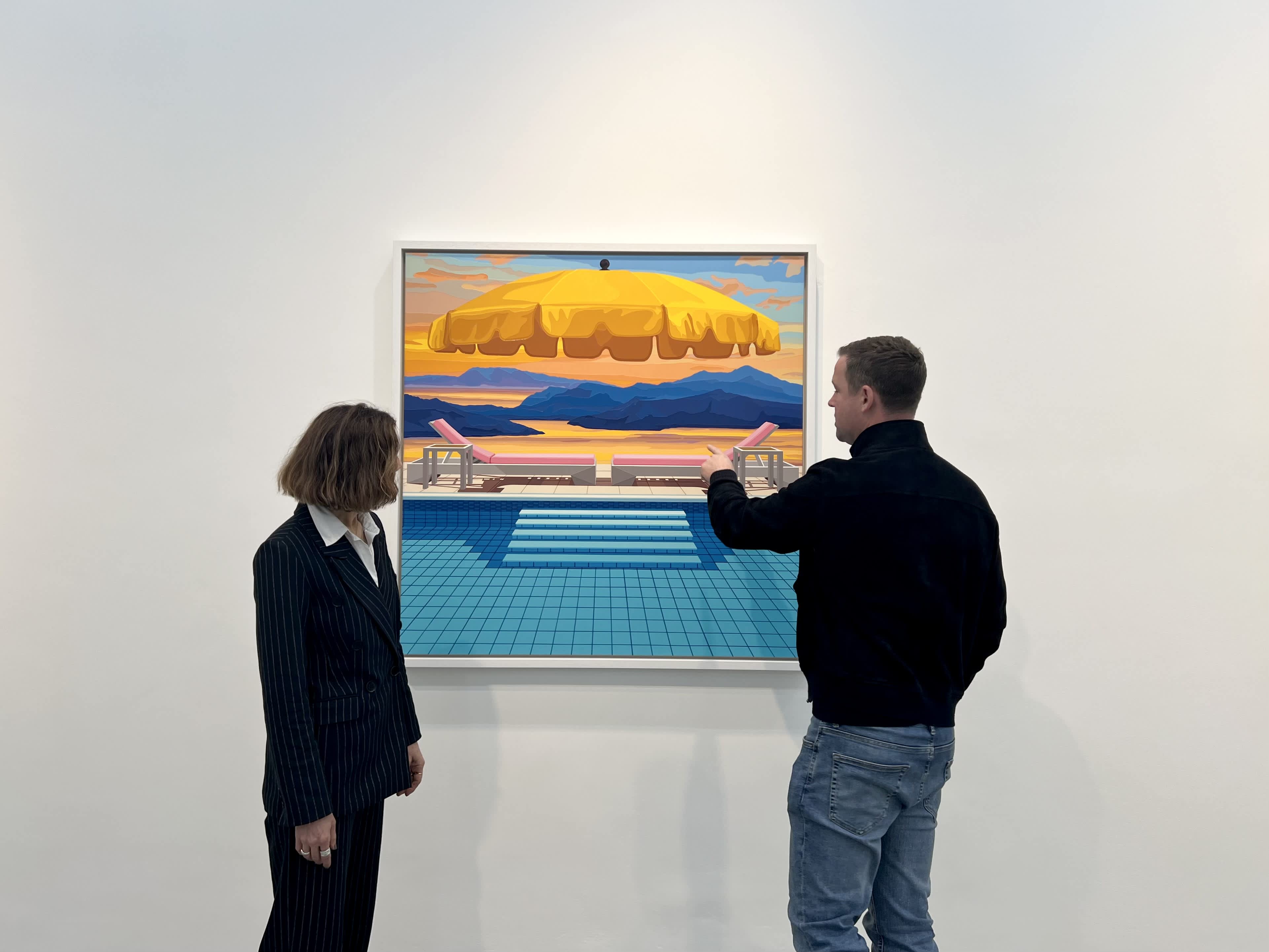
Fi Lovett: You often talk about the layering process and how it adds texture and precision to your work. Could you elaborate on that?
Will Martyr: Sure. Some colours require multiple layers to achieve the right opacity. Each section of a painting might need three to four coats, sometimes more for yellows, which are highly transparent. It’s meticulous work. For instance, those inflatable doughnuts in We Have Found All We Need and Here, We Are Whole—I spent twelve hours on my knees with a scalpel, cutting stencils for them and applying each layer precisely.
Fi Lovett: Your colour choices are vibrant and surreal, creating an atmosphere that’s unmistakable in your work. How do you go about choosing them?
Will Martyr: Once I’ve decided on the composition, I mix all the colours before I start painting. This part of the process is guided by memories and photos from places I’ve visited. The colours are mixed in advance, so the artwork remains true to the initial vision in my mind as I work.
Fi Lovett: Do you ever find that vision doesn’t quite translate onto the canvas?
Will Martyr: Every single time! Around 70% through a painting, I’ll start to doubt it. At 80%, it might feel slightly better, and by 90%, I start thinking it’s coming together. By 100%, I’m usually quite happy with it. The process is tough because, until everything is in place, certain blank areas make the piece feel incomplete.
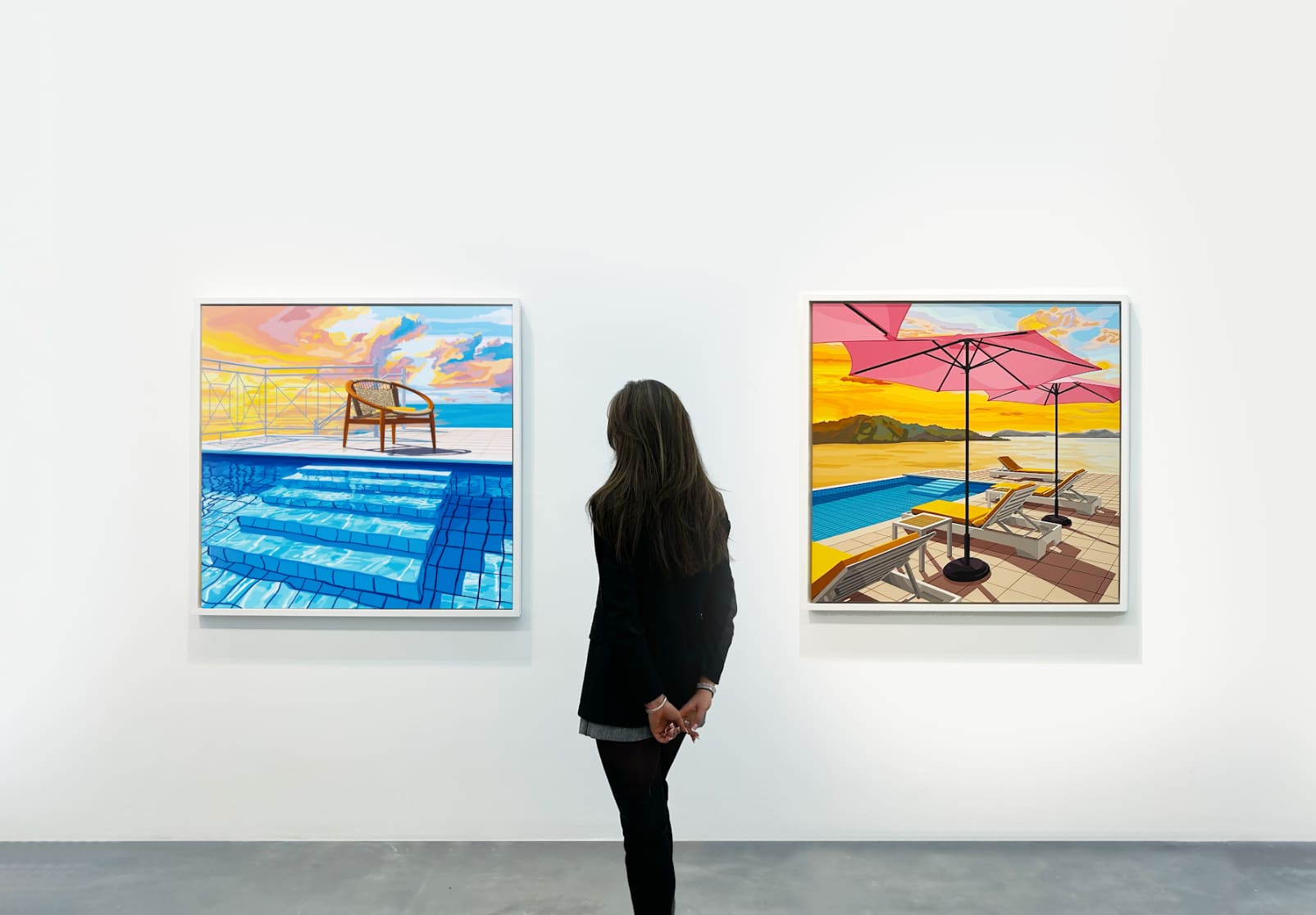
Fi Lovett: Your dedication to perfection seems intense, and that focus is clear in your work. Your scenes offer portals to heavenly, blissful settings, inviting viewers into a sort of idyllic world. Is that an intentional theme?
Will Martyr: Yes, I think so. My collectors often talk about how my paintings transport them. They remind them of joyful memories, and I hope they provide a sense of peace or happiness to people, even after a hard day. Art should be uplifting and transportive.
Fi Lovett: I’ve noticed a surreal quality in some recent pieces, like the floating sun umbrella in Something Eternal. Is this a new direction for you?
Will Martyr: The surreal has always been there subtly. I don’t feel constrained by realism, so if a parasol pole interrupts the scene’s balance, I remove it. This approach creates a dream-like quality in the composition, where everything is hyper-real, almost idealised.
Fi Lovett: These works are incredibly polished, yet they also convey humanity without any visible figures. How do you achieve that balance?
Will Martyr: By including objects associated with people—deck chairs, glasses, inflatables—there’s a sense that someone has just left or is about to arrive. Viewers can insert themselves or their loved ones into the scene. It’s like a diorama, a perfectly curated moment frozen in time.
Fi Lovett: And what do you hope people take away when they see your work?
Will Martyr: I hope they’re struck by the craftsmanship and the sheer amount of care that goes into each piece. And beyond that, I want them to feel joy. My work is about celebrating travel, love, and cherished moments with others. If they feel a sense of joy, then I feel I’ve done my job.
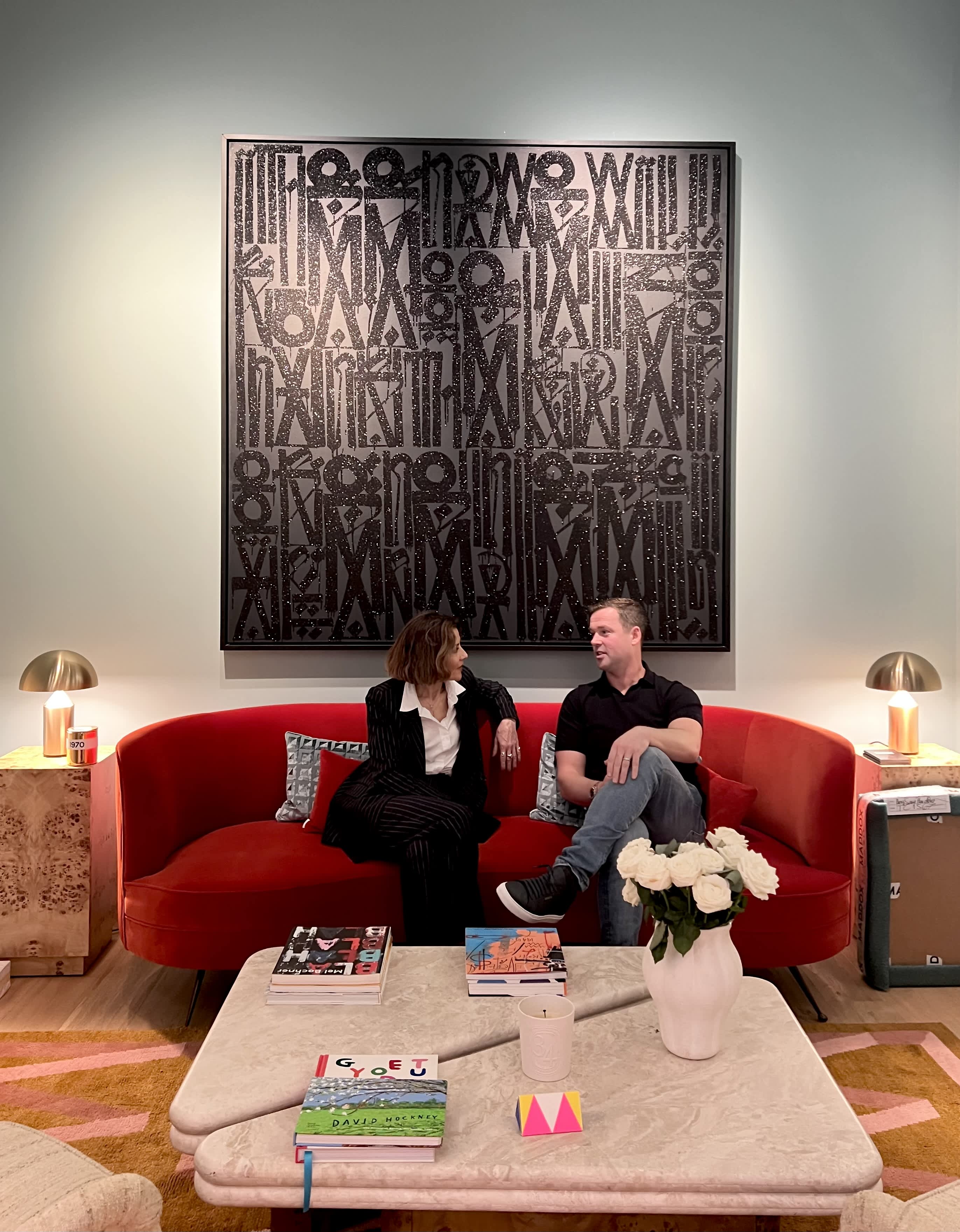
We invite you to experience In Every Moment and immerse yourself in Will Martyr's vibrant world of colour, memory, and tranquillity. Each piece offers a unique escape into serene landscapes, inviting personal reflection and connection. Join us at the gallery to witness these extraordinary works firsthand and share in the beauty that Martyr so masterfully captures.

